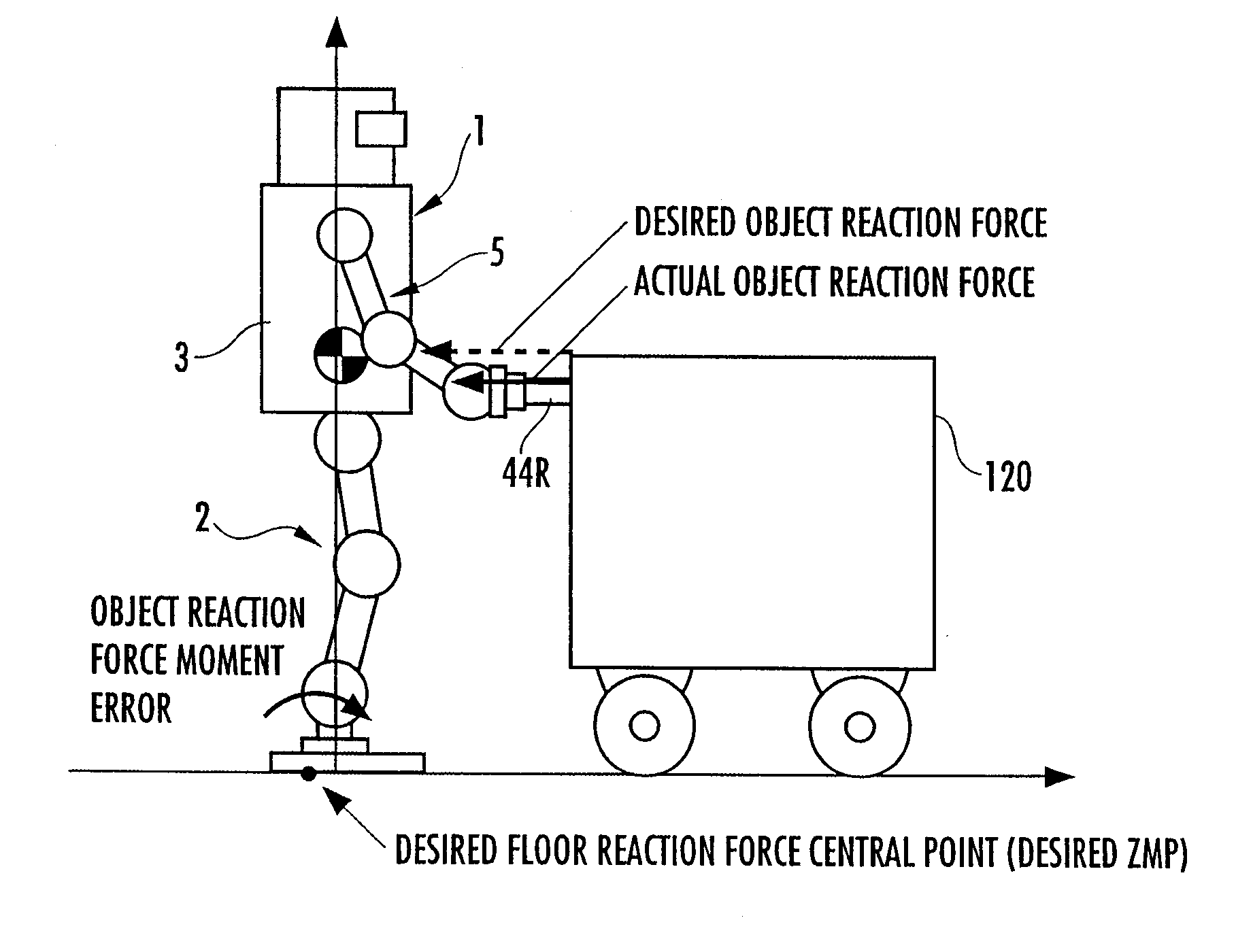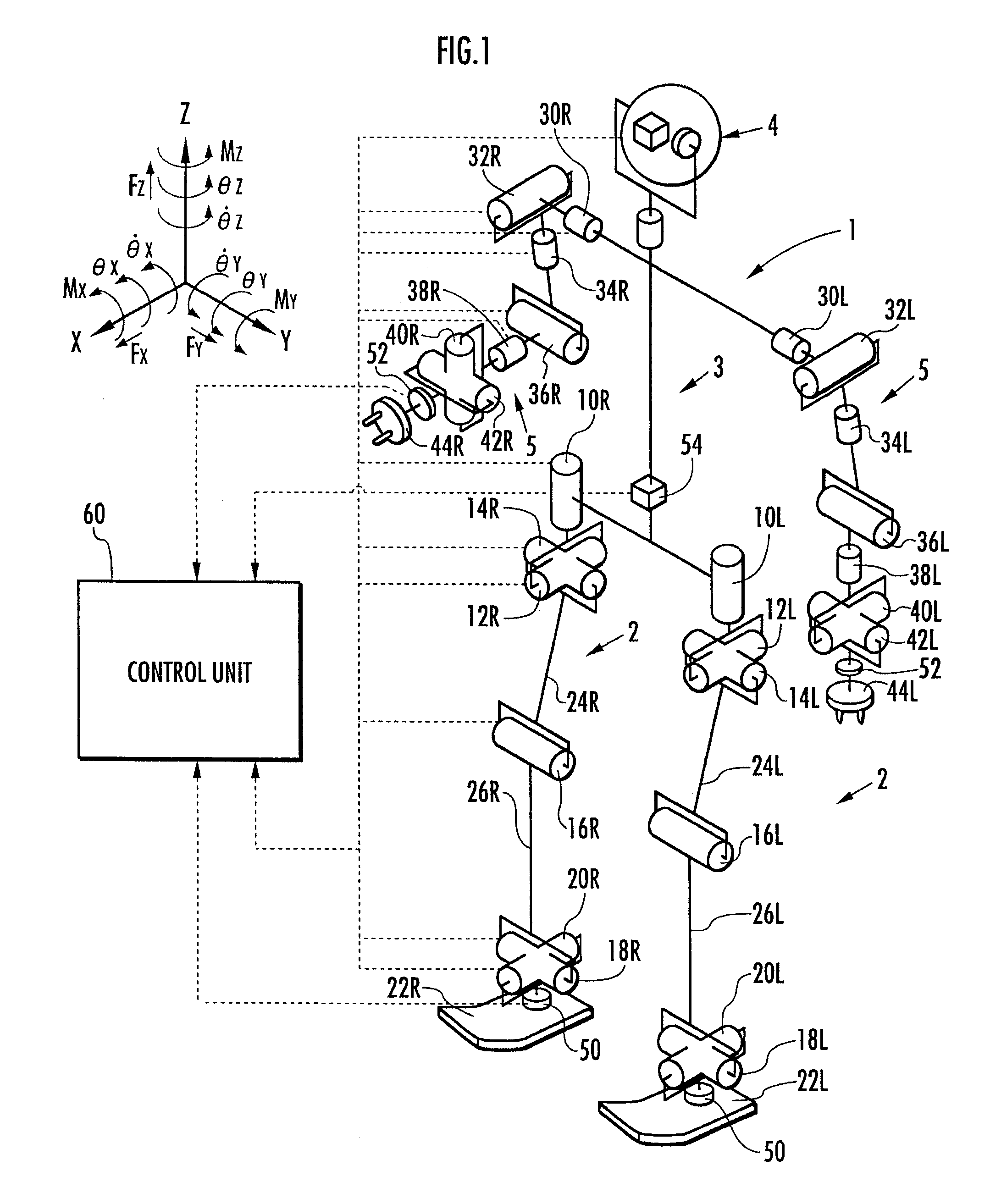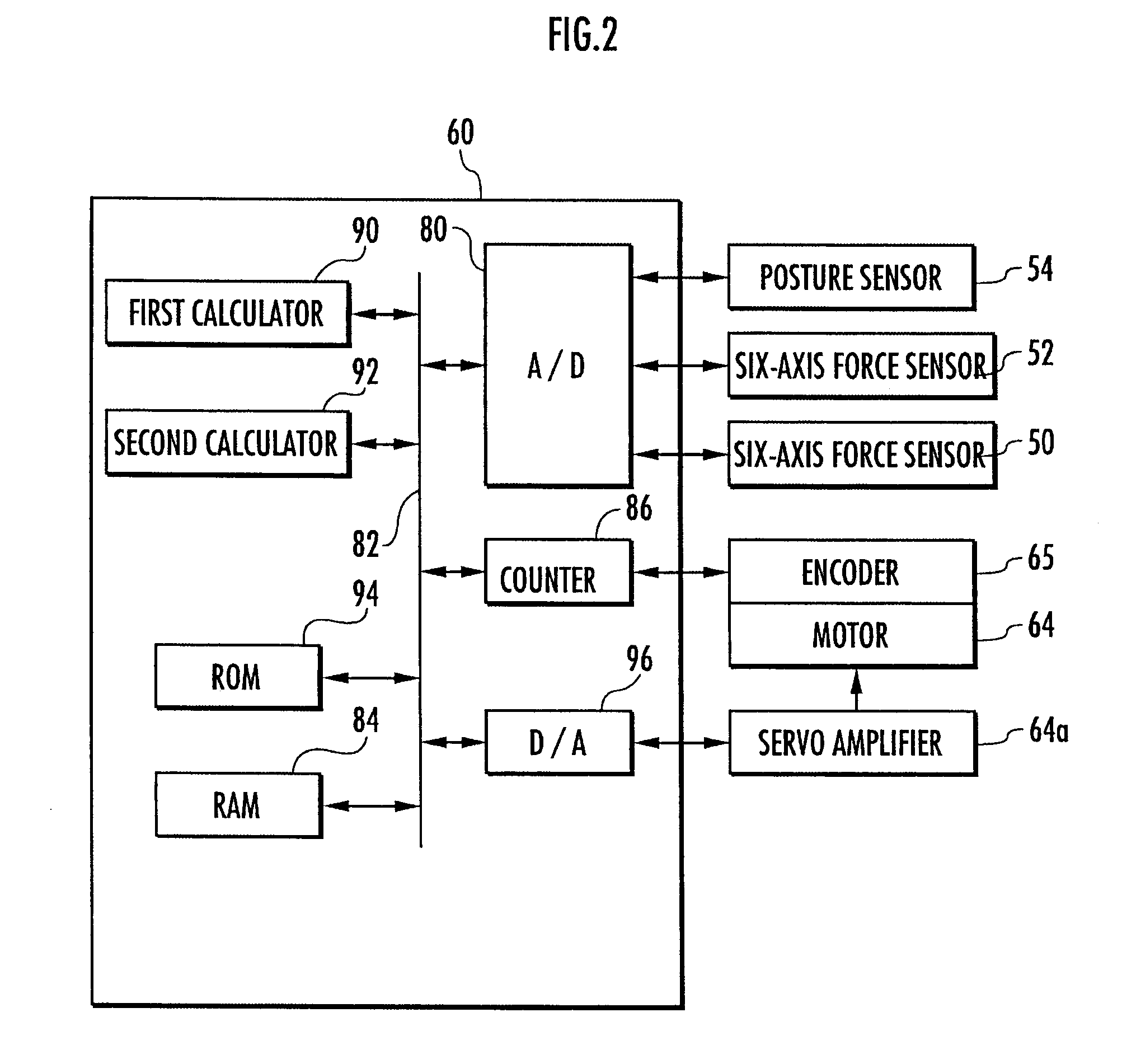Gait Pattern Generating Device and Controller of Legged Mobile Robot
- Summary
- Abstract
- Description
- Claims
- Application Information
AI Technical Summary
Benefits of technology
Problems solved by technology
Method used
Image
Examples
first embodiment
[0071]The following will explain in detail a gait generator 100 according to a first embodiment of the present invention. FIG. 5 to FIG. 7 are flowcharts showing the processing by the gait generator 100. The first embodiment is an embodiment of the first to the third inventions, the fifth invention, and the seventh to the tenth inventions of the present invention.
[0072]The gait generator 100 sequentially carries out the processing shown in the flowcharts of FIG. 5 to FIG. 7 at a predetermined calculation processing cycle.
[0073]First, in S01, a moving plan for an object 120 is determined. The moving plan to be determined here includes at least a moving plan for the object 120 for a predetermined future period (for a plurality of steps of the robot 1) from the current time. The moving plan is decided basically according to a moving requirement of the object 120 (a design requirement on a method and timing for moving the object 120), and it is constituted of a position / posture trajecto...
second embodiment
[0249]A second embodiment of the present invention will now be explained with reference to FIG. 20. In the explanation of the second embodiment, the same components or the like functional portions as those in the first embodiment will use the same reference numerals as those in the first embodiment, and the explanation thereof will be omitted. The second embodiment is the embodiment of the first to the third inventions, the fifth invention, and the seventh to the tenth inventions of the present invention.
[0250]The second embodiment differs from the first embodiment only in the processing for correcting a moving plan (the processing that corresponds to the eighth invention of the present invention) in S01 of FIG. 5. This will be explained below. A situation in which the difference between an actual object motion trajectory and a desired object motion trajectory based on a moving plan increases occurs if a relatively large change takes place in a disturbance force other than a force a...
third embodiment
[0257]A third embodiment of the present invention will now be explained with reference to FIG. 21 and FIG. 22. In the explanation of the third embodiment, the same components or the same functional portions as those in the first embodiment will use the same reference numerals as those in the first embodiment, and the explanation thereof will be omitted. The third embodiment is the embodiment of the first, the second invention, the fourth invention, and the sixth to the ninth inventions of the present invention.
[0258]FIG. 21 is a flowchart showing the processing of a part associated with the processing shown in FIG. 5 related to the first embodiment in the processing by a gait generator 100 in the third embodiment. As shown in FIG. 21, the third embodiment differs from the first embodiment only in the processing carried out when a determination result of S19 is NO.
[0259]More specifically, when a determination result of S19 is NO, a desired object reaction force trajectory has been co...
PUM
 Login to View More
Login to View More Abstract
Description
Claims
Application Information
 Login to View More
Login to View More - R&D
- Intellectual Property
- Life Sciences
- Materials
- Tech Scout
- Unparalleled Data Quality
- Higher Quality Content
- 60% Fewer Hallucinations
Browse by: Latest US Patents, China's latest patents, Technical Efficacy Thesaurus, Application Domain, Technology Topic, Popular Technical Reports.
© 2025 PatSnap. All rights reserved.Legal|Privacy policy|Modern Slavery Act Transparency Statement|Sitemap|About US| Contact US: help@patsnap.com



